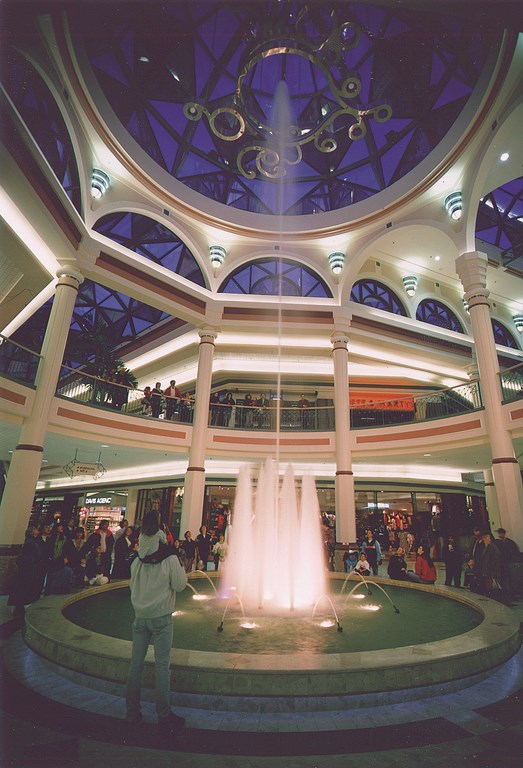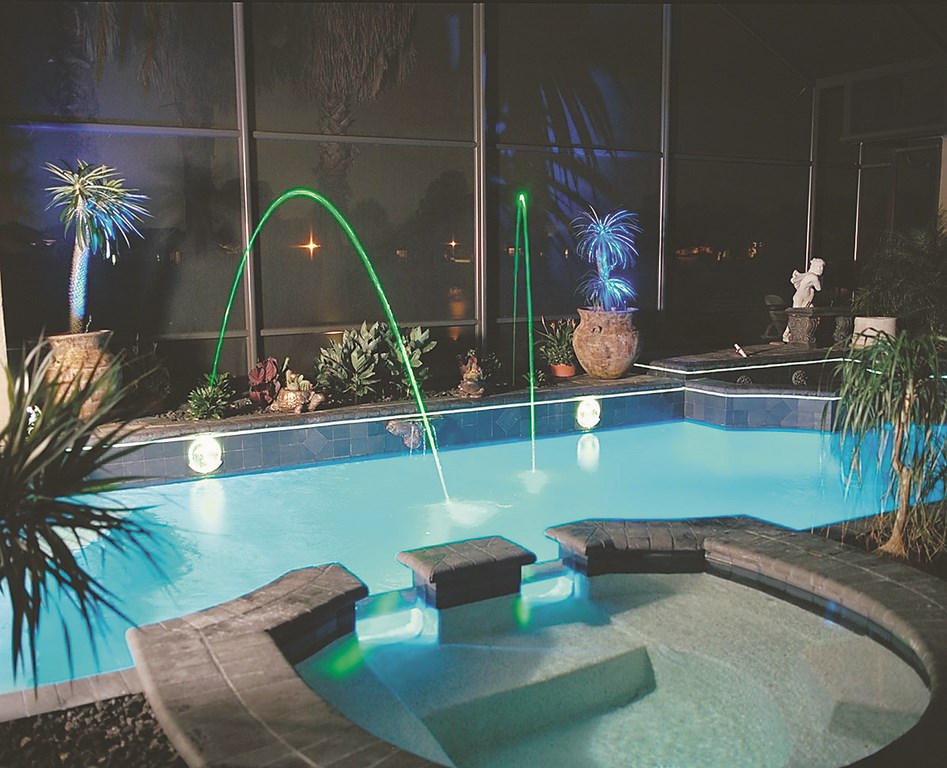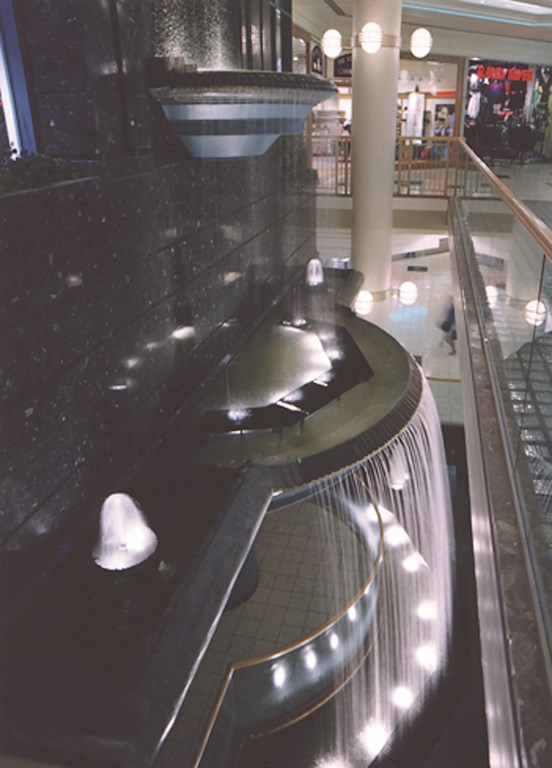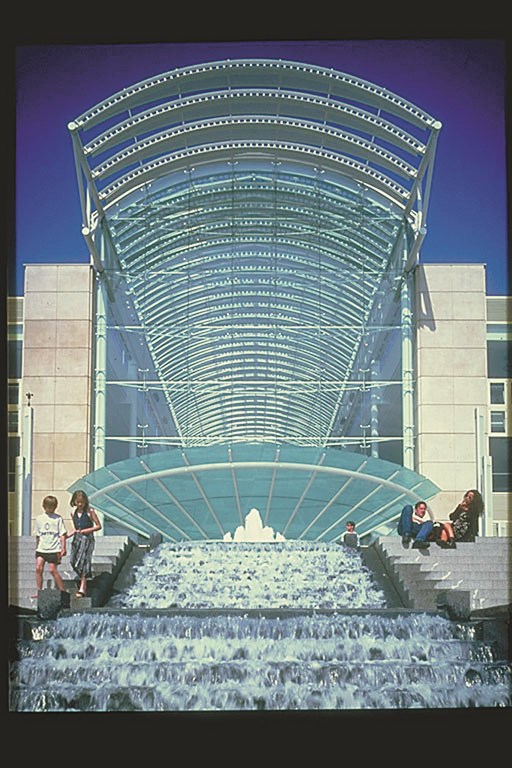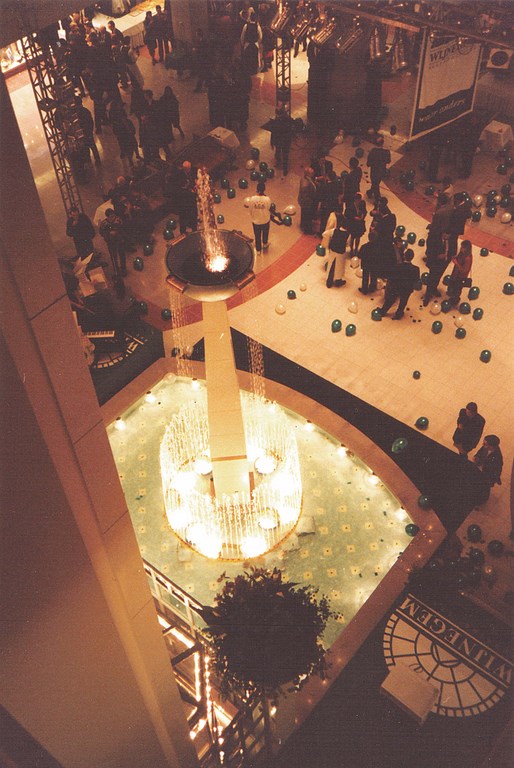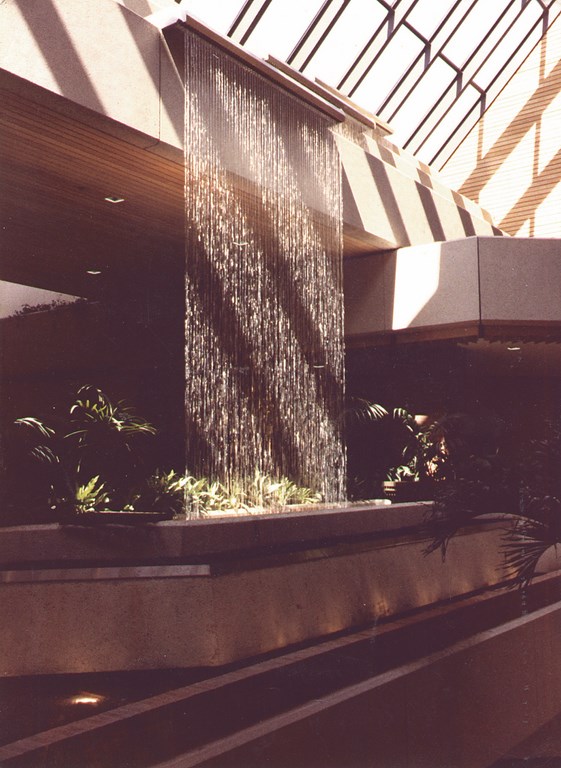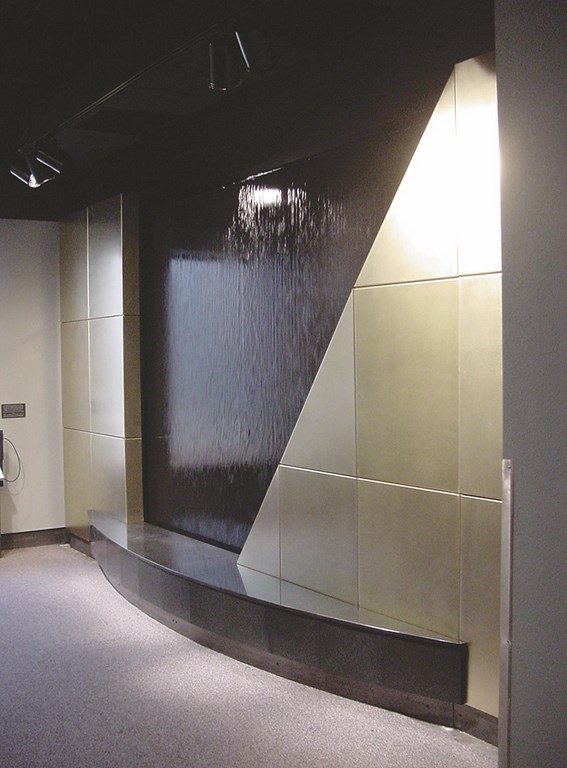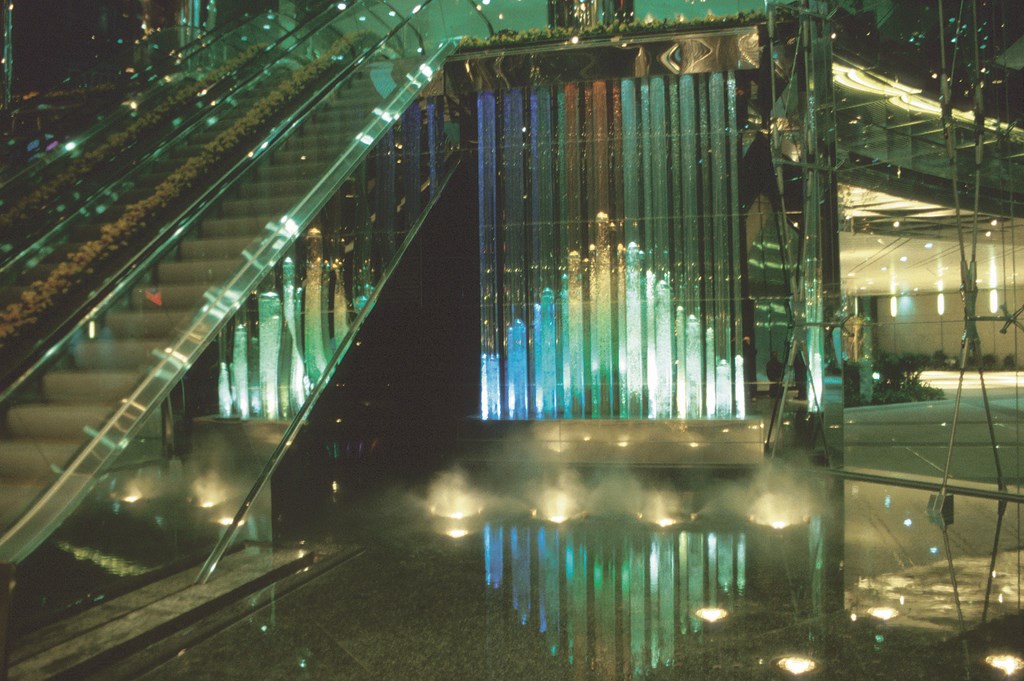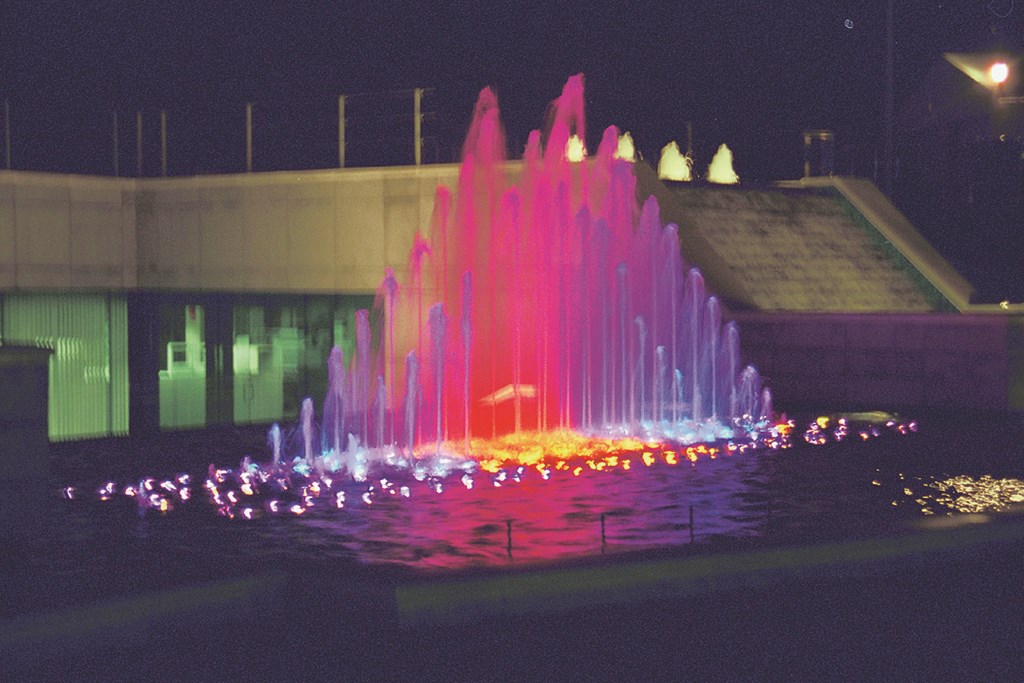Guiding the Lights
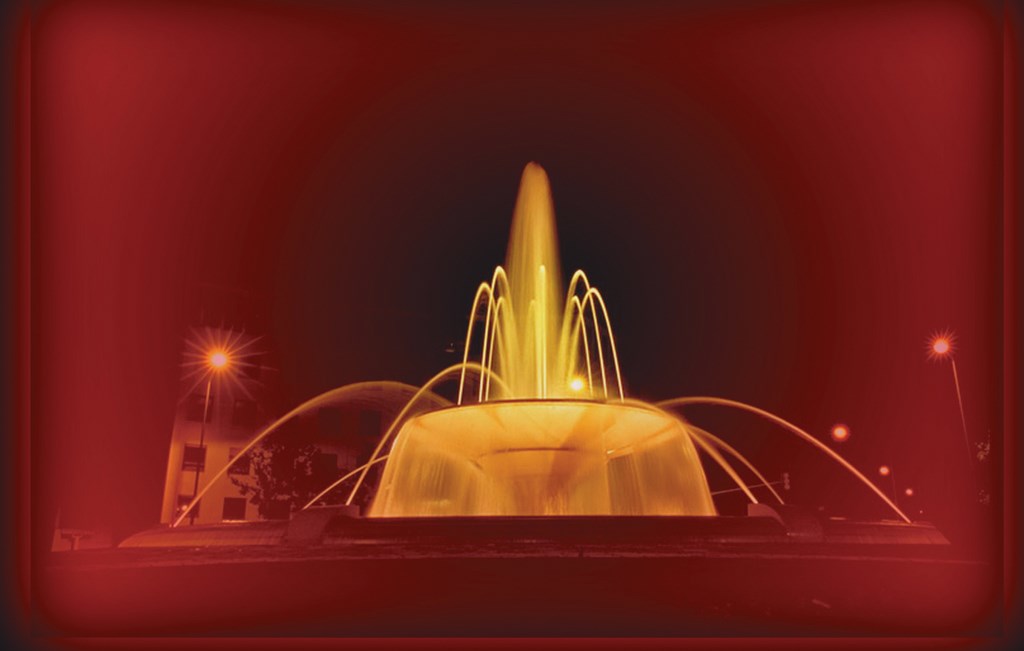
It’s a simple notion: When designing illumination for fountains and for watershapes in general, we as designers have the opportunity to choreograph the interaction of light, sound and motion to create visually compelling experiences.
Just as painters mix colors to create desired shades, moods and movement within their compositions, watershapers can use the sounds created by moving water, the water’s visual effects, various materials of construction, the ambient (natural) light, any surrounding architecture and the tools of modern illumination technology to take these masterpieces to whole new levels.
It would be misleading, however, if I didn’t start by observing that illumination (as the technical people call it) is a complex topic. To succeed, you need to understand not only the technology of various lighting modalities, but also how they are best applied and why. Once you grasp these principles, you’ll find that designing illumination for moving water is a creative and exciting exercise.
To demonstrate what I mean, the first of these two articles on fountain lighting will discuss ways in which lighting can become an integral part of the watershapers’ art.
CONSIDERING DESIGN
There are many ways in which to light moving water. As a result, when you design illumination for fountains (which will be the starting place for discussions that really include almost all watershapes), you need to consider and address a number of key issues:
[ ] What am I illuminating? You need to consider the entire environment when you answer this question, because lighting water is not just about calling attention only to the moving parts of the water. In fact, the overall “illumination experience” includes the lighting of the structures in and around the water, including walls, ceilings or leaf canopies that may stand behind or beside the water.
Light reflected from the water can dance and undulate on the surfaces of these nearby structures, creating interesting effects. In this sense, properly designed illumination for waterfeatures gives us the opportunity to add motion and drama to any public place or residential setting.
[ ] Designing by/for effect. This is the most important criterion watershapers need to consider in designing with light, largely because of the diverse forms water can take. For example, illuminating a serene, interior water wall calls up a different set of design parameters than does lighting a dynamic sequencing waterfeature outdoors.
The process of determining the design approach can be simplified by first identifying water effects according to what the water does:
* It shoots up in the air: This type of water is either an aerated (foamy) water effect of the sort seen in Figure 1 – or a non-aerated (clear-stream) water effect. The most effective lighting solution here consists of submersible light sources surrounding the water source (nozzle). This method of illumination captures both rising and falling streams of water.
| Figure 1: When water shoots up into the air, its visual qualities are best captured when the flow is surrounded by intense lights – in this case, to catch the opaque drama of the fully aerated water. (Photo by Malek Karsh) |
* It arches from one point to another: This is a similar effect to the one above but for the fact that the water’s landing area is not the same as its source. Submersible lighting often is required for both areas, thus doubling the number of fixtures needed. There are also laminar water flows that use fiberoptic illumination carried in the water stream itself: Only one light source is required here (Figure 2).
| Figure 2: Water flowing from one point to another will require multiple light sources to bring out its qualities – unless you set up a laminar flow, in which case the water can “carry” its own light. (Photo by Frank Weber) |
* It falls down from a water source: Waterfalls of all sorts are in this category, as are rain curtains, ejector-nozzle troughs and clear sheet falls. Natural light, non-submersible lights and submersible light sources are all effective for lighting the falling water (Figure 3). Up lighting (usually with submersible fixtures) is particularly effective here, because it projects the water’s motion against surrounding structures, including plantscapes, walls or ceilings.
| Figure 3: Falling water takes advantage of almost all available forms of illumination, including natural light and both submersible and non-submersible fixtures. As seen here, the results can be spectacular at night. (Photo by Doug Duff) |
* It flows on a surface: Illuminating water that flows across or hugs a structural form is probably the most difficult of all lighting tasks. With these water walls, sloped streams or watercourses, sculptural forms or water steps, the challenge is to illuminate the surface (which is the primary reflecting material rather than the water itself) rather than just the water flowing over it (Figure 4).
| Figure 4: Lighting water as it flows over surfaces is a challenge, and what you’re really trying to do is illuminate the reflective surface behind the water to the greatest effect possible. (Photo by Charlotte Wood) |
(The second part of this article, which will appear in an upcoming issue of WaterShapes, will expand on these lighting-design considerations.)
[ ] Accounting for infrastructure. It’s important to consider the physical requirements for lighting fixtures early in the design process.
Submersible lighting fixtures, for example, have height requirements as well as specific footprints, and their needs for cabling that must be taken into account. They also require a flow of water around and over them for proper cooling, which means that these lights may be inappropriate for tight spots, cove lighting, or use in sloped and shallow watercourses.
By contrast, fiberoptic solutions may be ideal for these conditions – although this technology has limitations of its own to consider when it comes to light output and cable distances. In designing, you need to know that fiberoptic cables lose light at a rate of approximately two percent per lineal foot of cable, so with these systems, it’s important to be sure your illuminator is no more than 40 feet from the point of output.
[ ] Designing illumination in accordance with local regulations. Although the National Electric Code clearly lays out national regulations, local municipal codes take precedence. This is significant because a small but growing number of jurisdictions are now requiring 12-volt lighting systems instead of the more traditional 120-volt submersible lights for waterfeatures and fountains.
As a result and as in so many other elements of a construction project, it pays to check on ways in which local codes may limit your lighting-design options.
[ ] Distinguishing between indoors and outdoors. Two main differences exist when designing for interior or indoor waterfeatures.
First, because natural light is limited in indoor locations, you need to illuminate indoor features for daylight as well as night hours. Also, interior features demand a greater intensity of illumination because there is a consistently low level of ambient light inside most buildings. As a result, you need to design interior features with more lighting sources and/or sources with brighter lamps (Figure 5).
| Figure 5: Interior waterfeatures require more intense lighting than their outdoor counterparts to compensate for the lower levels of natural light. As is seen here, meeting this indoor challenge can make for some singularly dramatic visuals. |
Second, you must consider lamp life. Outdoor features will require illumination for daily maximums of about six hours (even in winter months), while lighting for indoor features will be on as much as 16 hours per day. This means that a lamp with a service rating of 2,000 hours will last just 125 days indoors and a more bearable 333 days outdoors. Possible indoor solutions may be “under voltage” lamps (such as 130-volt lamps) or lamps designed for service lives of 4,000 hours or more.
APROACHES TO LIGHTING
To design appropriate illumination for any watershape in any setting, it’s important first of all to understand available approaches and available technologies – as well as what’s soon to come. Here’s a rundown, starting with basic approaches and then working through specific technologies.
[ ] Natural light: Natural light can beautifully augment the lighting of a watershape, but you cannot rely on it alone.
Both interior and exterior fountains can and should make use of available natural light according to conditions that prevail, but you must be careful how you balance your sources, because natural light can overwhelm a watershape if it’s not properly controlled.
The specific water effects in use also play a role here. If, for example, you’re working with aerated (frothy or bubbly) water, this will tend to diffuse natural light rather than let it go straight through to reflective surfaces.
This can lead to interesting lighting effects: As it hits the moving surface of the water, natural light will create the phenomenon known as spectral reflections, a shimmering effect on the surrounding area. This can be particularly nice when the waterfeature is well positioned within an architectural environment and the reflected light animates surfaces such as walls and ceilings.
With relatively still water, by contrast, natural light will move right through the pool of water. Because the water has no color (and no diffusing bubbles), only limited effects will be created here by natural light. In this case, you must use submersible lighting to create any desired shimmering effect.
And of course, natural light works with an interior waterfeature only at certain times of the day, and depends on the architectural design and its use of skylights, reflective surfaces or sculptural elements to maximize this lighting-design potential.
Indoors, you also have to consider the degree to which natural lighting is controlled, because it can wash out the appearance of a waterfeature. In some settings, the use of reflective surfaces in the feature, such as the mullions in the glazed panels of the waterfeature seen in Figure 6, can help throw interesting shadows and develop animation with the light from the skylight.
| Figure 6: Even indoors, natural light is a powerful tool in lighting watershapes. Here, the shadows cast by the window mullions serve to enhance the overall water effect. (Photo by Doug Duff) |
Outdoors, you need to consider how the light changes in the course of the day, particularly with respect to the angle at which sunlight plays on the water. Early mornings are optimal for spectral reflections, but the any time of day can be quite beautiful right up to dusk. You must also be aware that none of this works on dark days.
[ ] Non-submersible: Its behavior is similar to that of natural light, so non-submersible lighting cannot be used on its own and is instead used widely to augment submersible lighting.
Light from beyond a fountain can’t illuminate a clear jet, for example, because it would pass right through clear water. By contrast, with something like a high water wall, you could install these lights in the ceiling to shine down on the feature to great effect (Figure 7).
| Figure 7: Waterwalls are a lighting challenge best met through use of non-submersible lights – as in this case, where lighting from above creates strong yet subtle impressions by calling attention to tiny ripples and variations in the flow down the wall. (Photo by Douglas Group) |
As with natural lighting, non-submersible lighting illuminates the material behind the water, thus producing a less animated effect than you’ll get with light emerging through the water, as with submersible lighting.
[ ] Line-voltage lighting. Long the workhorse of watershape illumination, line-voltage lighting at 110/120 volts out of the socket is slowly becoming obsolete.
Europe has already embraced low-voltage (12-volt) lighting, primarily as a result of higher safety standards as well as a more urgent quest for efficiency and cost savings than you find in North America, where electricity is cheaper and line-voltage lighting is still available and popular. Here, the shift toward low-voltage lighting is being driven more by safety concerns and a lowered risk of electrocution than it currently is by energy issues.
Because of its past prominence and familiar technology, line-voltage lighting is still the least expensive form of illumination and is still used in many fountains, especially those of the non-interactive variety.
During transmission, line-voltage lighting does not lose as much intensity with distance as does low-voltage lighting – a cost and design advantage. But 110-volt halogens look yellow in comparison to 12-volt options, and there’s also the fact that as the rest of the world shifts over to 12-volt systems, line-voltage lamps for specialty applications will become scarcer and more expensive.
What it all boils down to is that a classic look is fading from the scene, driven by low-voltage technology and the desire on the parts of many designers to use the safer, brighter light available in 12-volt systems.
[ ] Low-voltage lighting: The increasing popularity of interactive and the so-called “children’s watershapes” is dictating the increasing use of low-voltage (12-volt) lighting for lots of other waterfeatures in North America. Recently, for example, regulations in Florida for interactive waterfeatures (in public water areas) have mandated a maximum of 15 volts for lighting systems.
This is a trend that will continue. Manufacturers have been making bulbs for 12-volt systems for a long time, and they’ve now been in use in the fountain industry for about ten years with good results. The key from the fountain manufacturer’s perspective is keeping up with the flood of new lamp types and configurations that continue to emerge from the lamp manufacturers and making housings that will put the new lamps to work in creating new lighting effects.
|
Color Counts It cannot be stressed enough: The color of materials you use in your fountains and waterfeatures is critically important to the impression they make. Particularly with outdoor features, you need to be aware that natural light goes right through non-aerated water. With a light background, the water will virtually disappear because it has no color – and the impression to be made by the moving water, no matter how artfully conceived, will be severely limited. (The same holds true, by the way, for indoor features lit by natural or non-submersible light.) As you select materials, remember that water relies on what’s behind it to give depth to pools, waterfalls and water walls. Darker materials do this best. — P.L. |
For all of its growing popularity, however, there are design limitations with low-voltage lighting. When designing a low-voltage installation, for example, care must be taken in calculating line losses in the wiring – which become more critical as distances increase. Helpfully, suppliers have developed multi-tap transformers and larger cable to help overcome these line losses – but this potential for less-than-full performance is yet another element that must be considered in the design process.
Even something as familiar as conduit sizing can become an issue, because the rules of thumb we’ve long used for line-voltage applications no longer apply. Wire gauges are larger to handle the higher amperage of low-voltage lights, and there are other extra costs for infrastructure, including the need to put transformers closer to the output sources than is true with line-voltage systems.
As a rule, you’ll find that low-voltage lighting is more expensive and requires greater care and attention during design and installation than line-voltage lighting. That said, it’s still true that 12-volt lamps usually have a longer service life than line-voltage lamps, and, as previously mentioned, they produce a brighter, whiter light.
[ ] Submersible lighting: Submersible light fixtures for fountains are virtually identical to submersible swimming pool fixtures in that both use incandescent or halogen lamps sealed in watertight enclosures. In both cases, it’s also important to make certain the light doesn’t shine into people’s eyes.
The main distinction between the two technologies is that fountain fixtures are constructed out of bronze and/or copper, while swimming pool fixtures typically use stainless steel or plastic. The difference exists because in fountain applications, lights are often freestanding and are installed in areas that may subject them to more abuse than you’d find in a typical swimming pool installation – hence the more robust housings. Also, fountain fixtures often use higher wattage lamps because more lumens (that is, greater light intensities) are required to illuminate vertical fountain effects.
Another distinction, of course, is that positioning is more critical in fountains. This is why freestanding fixtures that sit on the bottom of a fountain’s pool are popular with designers because they can be moved and adjusted as the fountain is operating to optimize visual effects. (An alternative here is niched fountain lighting that allows plenty of leeway for swivel adjustment.)
Another possibility here is the wet-and-dry-fixture fountain lighting that has emerged in the last half-dozen years in construction of dry-deck fountains or waterfeatures that don’t stand in bodies of water. While these fixtures can be used in both submersible and wet/dry locations, there are restrictions. U.S. regulations, for instance, limit the external heat of a light fixture to 194 degrees Fahrenheit (90 degrees Celsius). Because 70% to 80% of incandescent lighting is in the infrared spectrum and generates heat, lamps for these applications are restricted to 35 to 75 watts (compared to a submersible’s 1,000-watt maximum).
Metal-halide fixtures are an excellent potential light source for wet and dry fixtures since more of their energy (wattage) is in the visible light spectrum and they don’t create as much heat per watt of power. This technology is still emerging, but it will represent a welcome addition to the design repertoire.
[ ] Fiberoptic illumination: Fiberoptic lighting has been around in fountains for more than a dozen years and has improved dramatically in that time (Figure 8). This technology uses either colored glass or dichroic filters positioned between the lamp/optic lens assembly and the fiberoptic cable.
| Figure 8: Fiberoptics aren’t just for suffusing laminar flows with light: In this case, they lend subtle colors and color changes to vertical water structures. (Photo by Doug Duff) |
Fiberoptic illuminators are usually available with a color-changing feature that incorporates pie shaped pieces of different colors assembled together in a disk, rotated by a small motor. The most brilliant colors are green and violet, with red being the least intense color.
With moving water, fiberoptics are used primarily to add color to laminar jets and sometimes with other color-changing effects. With the other water effects, the results are similar to those obtained with light-emitting diodes (LEDs), but in neither case does the cost per impact beat traditional lighting.
Light intensity is the key issue: In brighter locations such as an indoor mall, fiberoptics lack the intensity required to make a compelling impression. For the moment, the best fiberoptic application with water in motion is with a laminar jet, where it creates a soft glow and a peaceful atmosphere.
Laminar water can carry light along its entire length even when it’s a curved arc, and the effect can be quite stunning as people are enticed by the sense that the stream is not even water, especially when the glass-like rods of laminar water appear to be changing color!
LIGHTS AT WORK
The choices in approach listed above are largely matters of experience and even personal preference on the part of the designer. When it comes to putting light to work in and around the water, however, we begin to step beyond technological savvy and into the realm of art.
We’ll delve into that topic much more directly in the next article, but before we get there, here are a couple of additional technology-oriented considerations that come into play when you’ve chosen a style and it’s time to get down to composing your masterpiece.
[ ] Spotlighting vs. floodlighting: The difference between a spotlight and floodlight has to do with the angle of the lamp’s lens. A spotlight emits a narrowly focused beam that illuminates a small spot on a wall, for instance, while a floodlight can illuminate the whole of that same wall from a distance.
As mentioned previously, deciding on your approach to illumination depends on the effects involved. With vertical jets, you need intense, high-traveling light, which means using a spotlight because it has high lumens in middle of the beam and less on the edges. By contrast, illuminating water walls, foaming jets, cascades and low-height jets will not present the same challenge, so you can spread out the lumens with the width of a floodlight.
[ ] Colored Light: Colored lighting for waterfeatures has been around as long as fountain lighting itself. Submersible and dry lights have used colored pieces of glass or plastic installed in front of the lamp to add this effect for generations.
In the last 15 years, however, theatrical dichroic-coated lenses have been used increasingly in high-end commercial waterfeatures (Figure 9). These lenses, which are comprised of two colors, produce a truer color light than conventional colored glass. They also allow more light to pass through the color filter than is possible with ordinary colored glass – and they are more expensive.
| Figure 9: Whether achieved with glass or the newer dichroic lenses, colored light can play an important part in the impression a fountain makes. (Photo by Freeport Fountains) |
Typical colors available are amber, turquoise, red, blue and green. It’s important to note that various colors require you to increase lighting intensities to achieve optimum levels: Amber and turquoise require 50% more intensity than do clear lights, for example, while red requires 100% more and blue and green each call for a 250% boost. You also need to be aware that high ambient light levels tend to wash out colored lights: In such conditions, you should use clear, amber or turquoise colors.
SO MUCH MORE
As you can see, even a quick survey of basic lighting options offers the potential for complexity in both technical issues and aesthetic considerations. Through experience, we’ve learned that although there are certain reliable rules that apply to specific lighting technologies, each project – from small and simple to large and complex – must be considered on it’s own terms.
Backed up with a solid understanding of your lighting options and based on discussions with clients to determine their expectations and desires, your capacity to think through the lighting options as you develop a watershape design will add considerable value and beauty to the your work.
Next time: In Part II, we’ll take a look at emerging lighting technologies and safety issues and focus on maximizing the aesthetic effects of fountains and other watershapes that use moving water.
Paul L’Heureux is president of Crystal Fountains, a waterfeature design, engineering and construction firm based in Toronto. Working as a team of experienced waterfeature specialists, the Canadian firm produces high-end commercial fountains and waterfeatures around the world. A “career world traveler,” L’Heureux has more than 20 years’ experience in business management, export marketing and process improvement.











